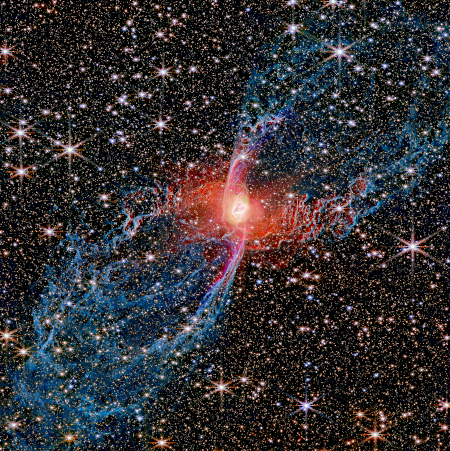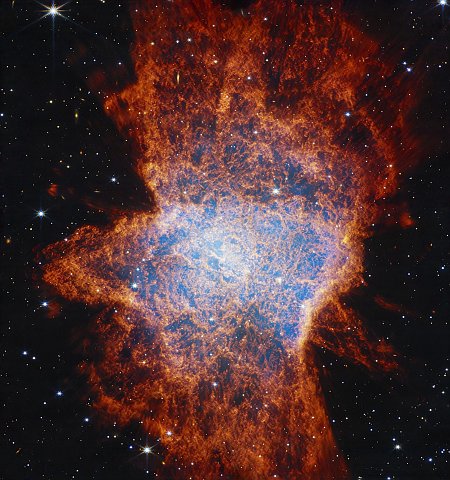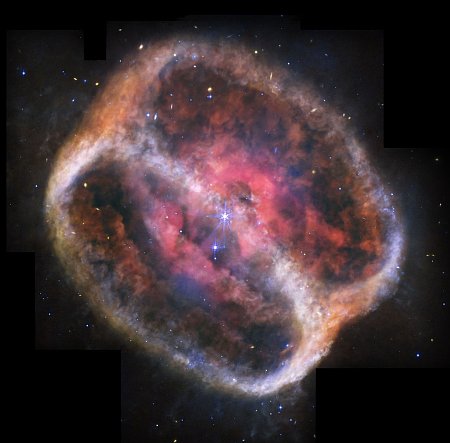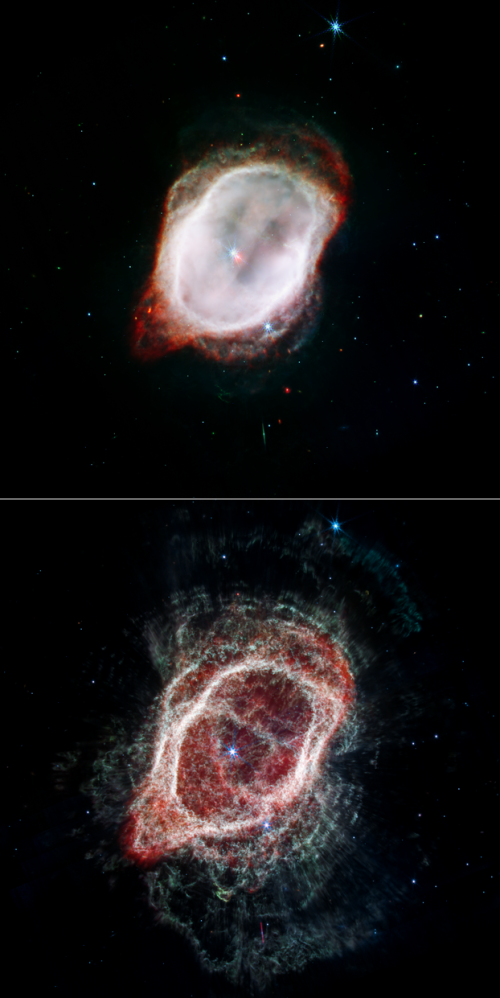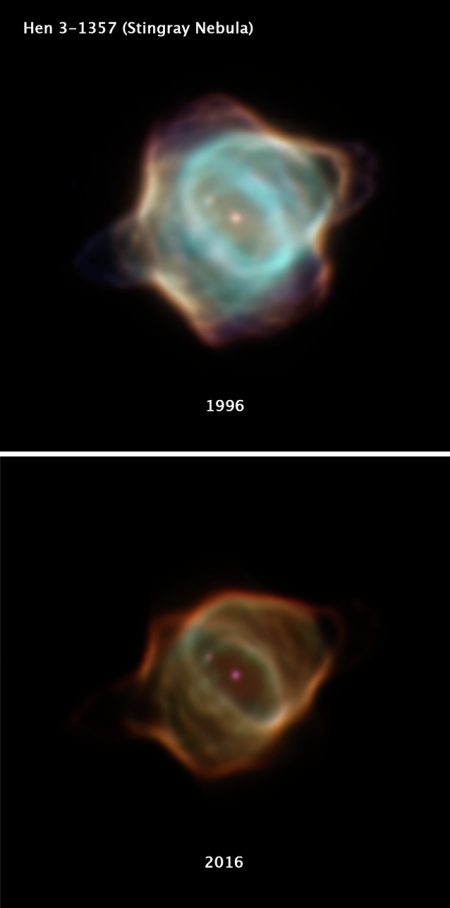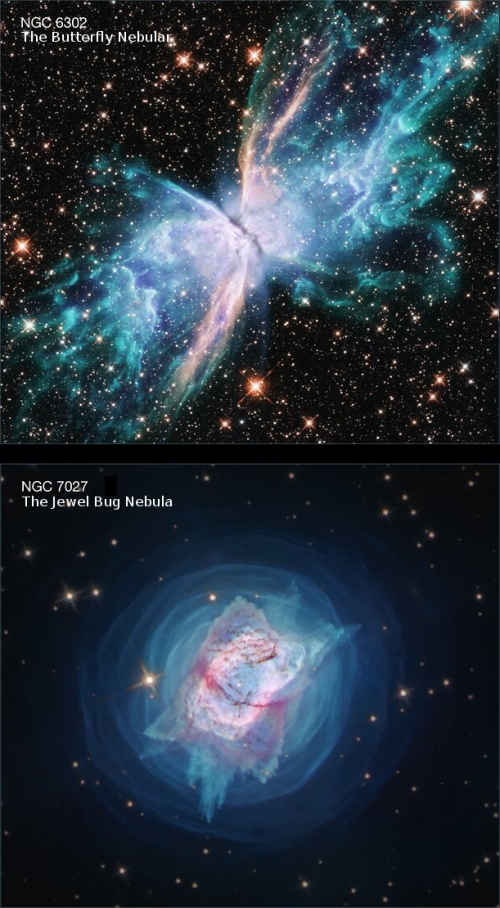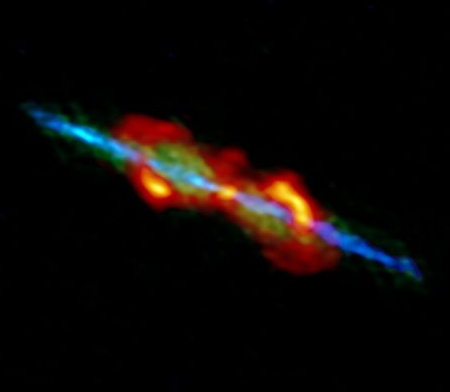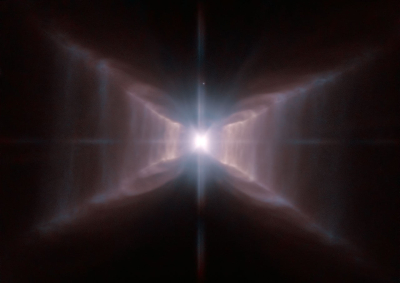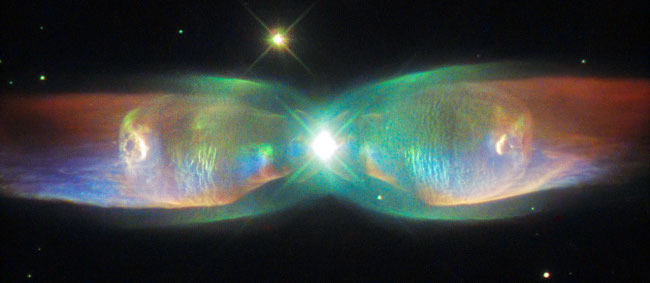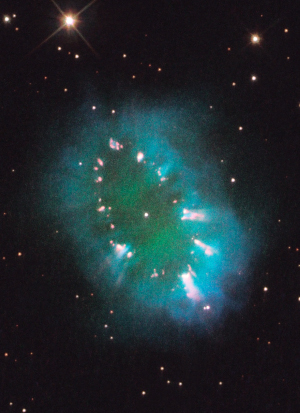Webb captures spectacular false-color image of planetary nebula
Cool image time! The picture to the right, reduced to post here, was taken by the Webb Space Telescope and released this week by the European Space Agency (ESA). It shows in the near-infrared what the scientists have labeled “The Red Spider Nebula”, a planetary nebula of eruptive gases formed near the end of a star’s life.
Webb’s new view of the Red Spider Nebula reveals for the first time the full extent of the nebula’s outstretched lobes, which form the ‘legs’ of the spider. These lobes, shown in blue, are traced by light emitted from H2 molecules, which contain two hydrogen atoms bonded together. Stretching over the entirety of NIRCam’s field of view, these lobes are shown to be closed, bubble-like structures that each extend about 3 light-years. Outflowing gas from the centre of the nebula has inflated these massive bubbles over thousands of years.
Gas is also actively jetting out from the nebula’s centre, as these new Webb observations show. An elongated purple ‘S’ shape centred on the heart of the nebula follows the light from ionised iron atoms. This feature marks where a fast-moving jet has emerged from near the nebula’s central star and collided with material that was previously cast away by the star, sculpting the rippling structure of the nebula seen today.
It is theorized that a not yet detected second star circles the primary, with both acting as the blades in a blender to mix the gases and help produce these shapes.
Be sure to click on the image to see the full resolution version. It shows the details in the central region much more clearly.
Cool image time! The picture to the right, reduced to post here, was taken by the Webb Space Telescope and released this week by the European Space Agency (ESA). It shows in the near-infrared what the scientists have labeled “The Red Spider Nebula”, a planetary nebula of eruptive gases formed near the end of a star’s life.
Webb’s new view of the Red Spider Nebula reveals for the first time the full extent of the nebula’s outstretched lobes, which form the ‘legs’ of the spider. These lobes, shown in blue, are traced by light emitted from H2 molecules, which contain two hydrogen atoms bonded together. Stretching over the entirety of NIRCam’s field of view, these lobes are shown to be closed, bubble-like structures that each extend about 3 light-years. Outflowing gas from the centre of the nebula has inflated these massive bubbles over thousands of years.
Gas is also actively jetting out from the nebula’s centre, as these new Webb observations show. An elongated purple ‘S’ shape centred on the heart of the nebula follows the light from ionised iron atoms. This feature marks where a fast-moving jet has emerged from near the nebula’s central star and collided with material that was previously cast away by the star, sculpting the rippling structure of the nebula seen today.
It is theorized that a not yet detected second star circles the primary, with both acting as the blades in a blender to mix the gases and help produce these shapes.
Be sure to click on the image to see the full resolution version. It shows the details in the central region much more clearly.

